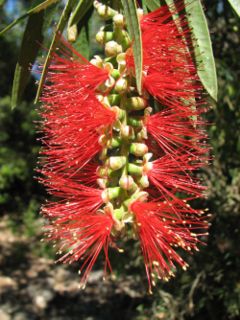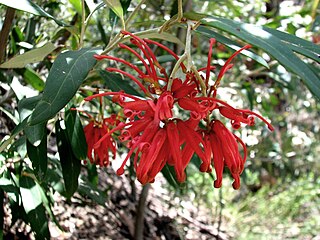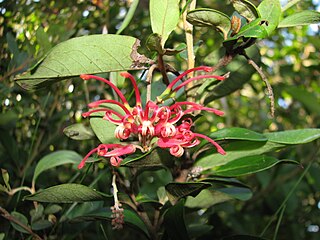
Lionhead Studios Limited was a British video game developer founded in July 1997 by Peter Molyneux, Mark Webley, Tim Rance, and Steve Jackson. The company is best known for the Black & White and Fable series. Lionhead started as a breakaway from developer Bullfrog Productions, which was also founded by Molyneux. Lionhead's first game was Black & White, a god game with elements of artificial life and strategy games. Black & White was published by Electronic Arts in 2001. Lionhead Studios is named after Webley's hamster, which died not long after the naming of the studio, as a result of which the studio was very briefly renamed to Redeye Studios.

Peter Douglas Molyneux is an English video game designer and programmer. He created the god games Populous, Dungeon Keeper, and Black & White, as well as Theme Park, the Fable series, Curiosity – What's Inside the Cube?, and Godus. He currently works at 22cans.

Bullfrog Productions Limited was a British video game developer based in Guildford, England. Founded in 1987 by Peter Molyneux and Les Edgar, the company gained recognition in 1989 for their third release, Populous, and is also well known for titles such as Theme Park, Magic Carpet, Syndicate and Dungeon Keeper. Bullfrog's name was derived from an ornament in the offices of Edgar's and Molyneux's other enterprise, Taurus Impact Systems, Bullfrog's precursor where Molyneux and Edgar were developing business software. Bullfrog Productions was founded as a separate entity after Commodore mistook Taurus for a similarly named company.

Callistemon is a genus of shrubs in the family Myrtaceae, first described as a genus in 1814. The entire genus is endemic to Australia but widely cultivated in many other regions and naturalised in scattered locations. Their status as a separate taxon is in doubt, some authorities accepting that the difference between callistemons and melaleucas is not sufficient for them to be grouped in a separate genus.

Earl of Sefton was a title in the Peerage of Ireland created in 1771 for the 8th Viscount Molyneux. The Earls of Sefton held the subsidiary titles Viscount Molyneux, of Maryborough in the Queen's County, in the Peerage of Ireland, and Baron Sefton, of Croxteth in the County Palatine of Lancaster, in the Peerage of the United Kingdom.

Molyneux is a French surname. The surname has been linked primarily to a large French family that settled in Lancashire, England. By the 14th century the Molyneux family had split into three main branches; the Lancashire line, who became the Earls of Sefton, the Nottingham line, and the Calais line, from those remaining in France. There was also a branch of the family who were Irish baronets.

Molyneux's problem is a thought experiment in philosophy concerning immediate recovery from blindness. It was first formulated by William Molyneux, and notably referred to in John Locke's An Essay Concerning Human Understanding (1689). The problem can be stated in brief, "if a man born blind can feel the differences between shapes such as spheres and cubes, could he, if given the ability to see, distinguish those objects by sight alone, in reference to the tactile schemata he already possessed?"

Bizarre, Bizarre is a 1937 French comedy film directed by Marcel Carné. It is based on the 1912 novel His First Offence by J. Storer Clouston.

Grevillea victoriae, also known as royal grevillea or mountain grevillea, is a shrub which is endemic to south-eastern New South Wales and mountainous parts of Victoria in Australia.

Emery Molyneux was an English Elizabethan maker of globes, mathematical instruments and ordnance. His terrestrial and celestial globes, first published in 1592, were the first to be made in England and the first to be made by an Englishman.
Banksia croajingolensis, commonly known as the Gippsland banksia, is a species of small shrub that is endemic to a small area in Victoria, Australia. It is known from fewer than 500 plants growing along a single drainage line in the Croajingolong National Park.

Stefan Basil Molyneux is an Irish-born Canadian far-right white nationalist and white supremacist podcaster, blogger, author, political commentator, and banned YouTuber, who promotes conspiracy theories, scientific racism, eugenics, and racist views. As of September 2020, Molyneux has been permanently banned or permanently suspended from PayPal, Mailchimp, YouTube, Twitter and SoundCloud, all for violating hate speech policies.

Monsieur Beaucaire is a short novel by Pulitzer Prize-winning author Booth Tarkington that was first published in 1900.

Grevillea miqueliana, commonly known as oval-leaf grevillea, is a shrub that is endemic to mountainous areas of eastern Victoria in Australia. It grows to between 1.5 and 2.5 metres in height. The species was first formally described by botanist Ferdinand von Mueller, his description published in Transactions of the Philosophical Society of Victoria in 1855. The species epithet honours Dutch botanist Friedrich Anton Wilhelm Miquel (1811-1871).
Grevillea monslacana, commonly known as Lake Mountain grevillea, is a shrub species which is endemic to mountainous areas of eastern Victoria in Australia. It grows to 2 metres in height. The species, which was first formally described in 2000, is listed as "Rare in Victoria" on the Victorian Department of Sustainability and Environment's Advisory List of Rare Or Threatened Plants In Victoria. It was previously known as the Lake Mountain form of Grevillea victoriae.

Grevillea epicroca is a species of flowering plant in the family Proteaceae and is endemic to south-eastern New South Wales. It is a shrub with elliptic to lance-shaped leaves and red, silky-hairy flowers.
Grevillea hockingsii is a shrub species that is endemic to Queensland, Australia. It was first formally described by Bill Molyneux and Peter Olde in 1994.

Grevillea bemboka is a species of flowering plant in the family Proteaceae and is endemic to a restricted area of far south-eastern New South Wales. It is a spreading to erect shrub with hairy branchlets, egg-shaped to elliptic leaves and red or reddish-pink flowers.
Grevillea molyneuxii, commonly known as the Wingello grevillea, is a shrub which is endemic to the shrublands of New South Wales in Australia.
Hakea asperma, commonly known as the Native Dog hakea, is an endangered shrub of the Proteaceae endemic to a small area in northeastern Victoria. An unusual species that has no fruit and only reproduces by suckering.














